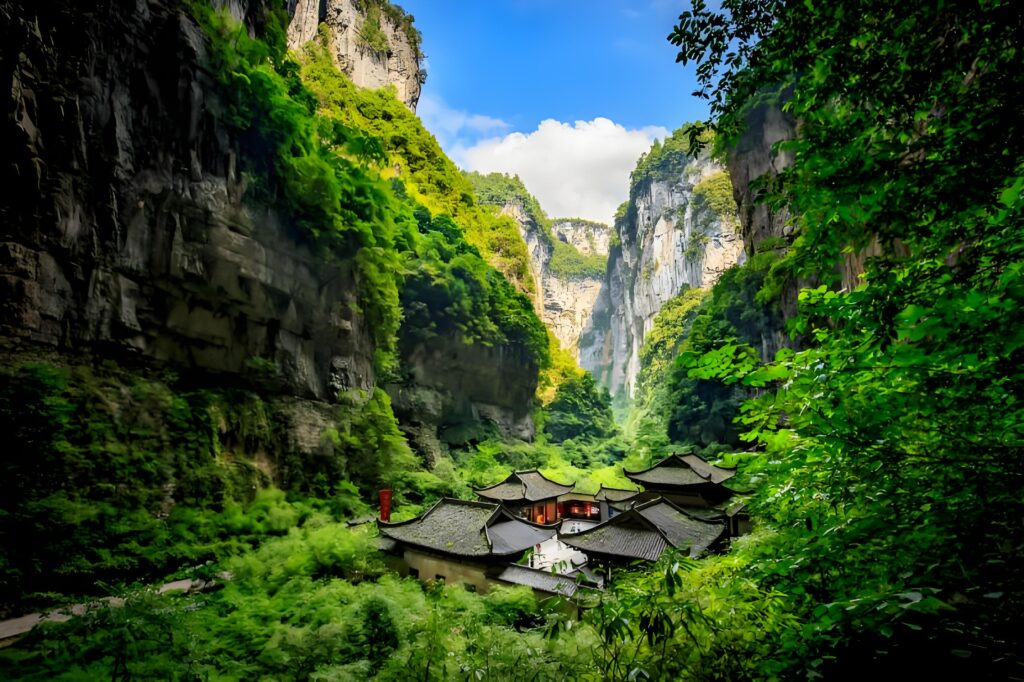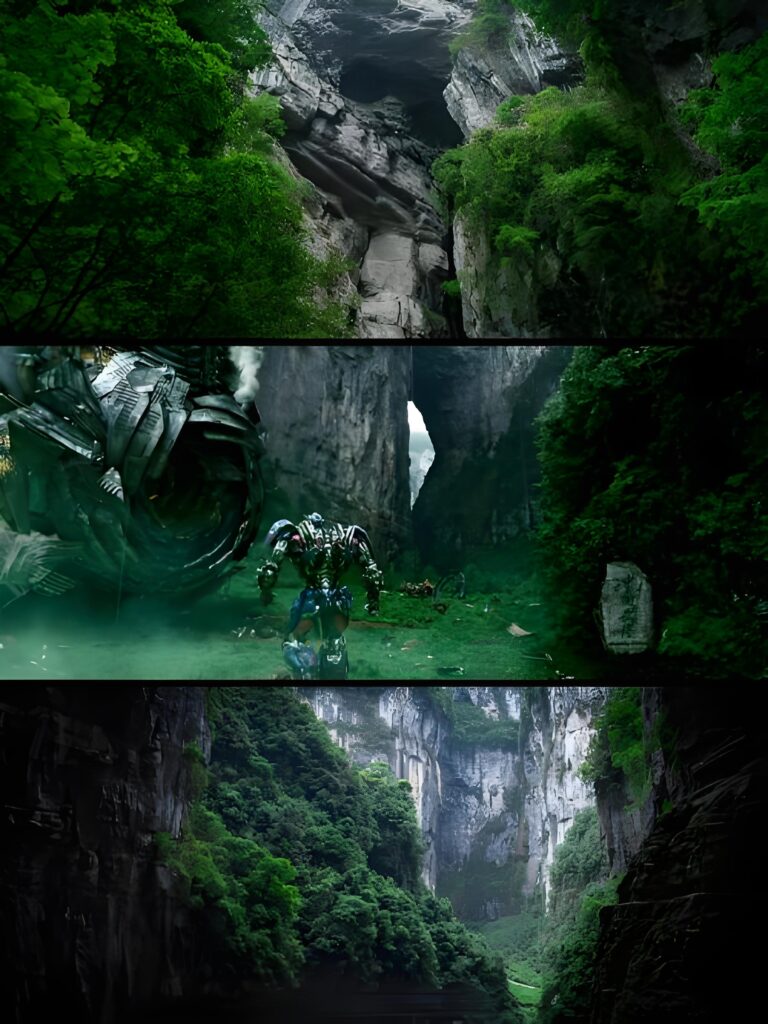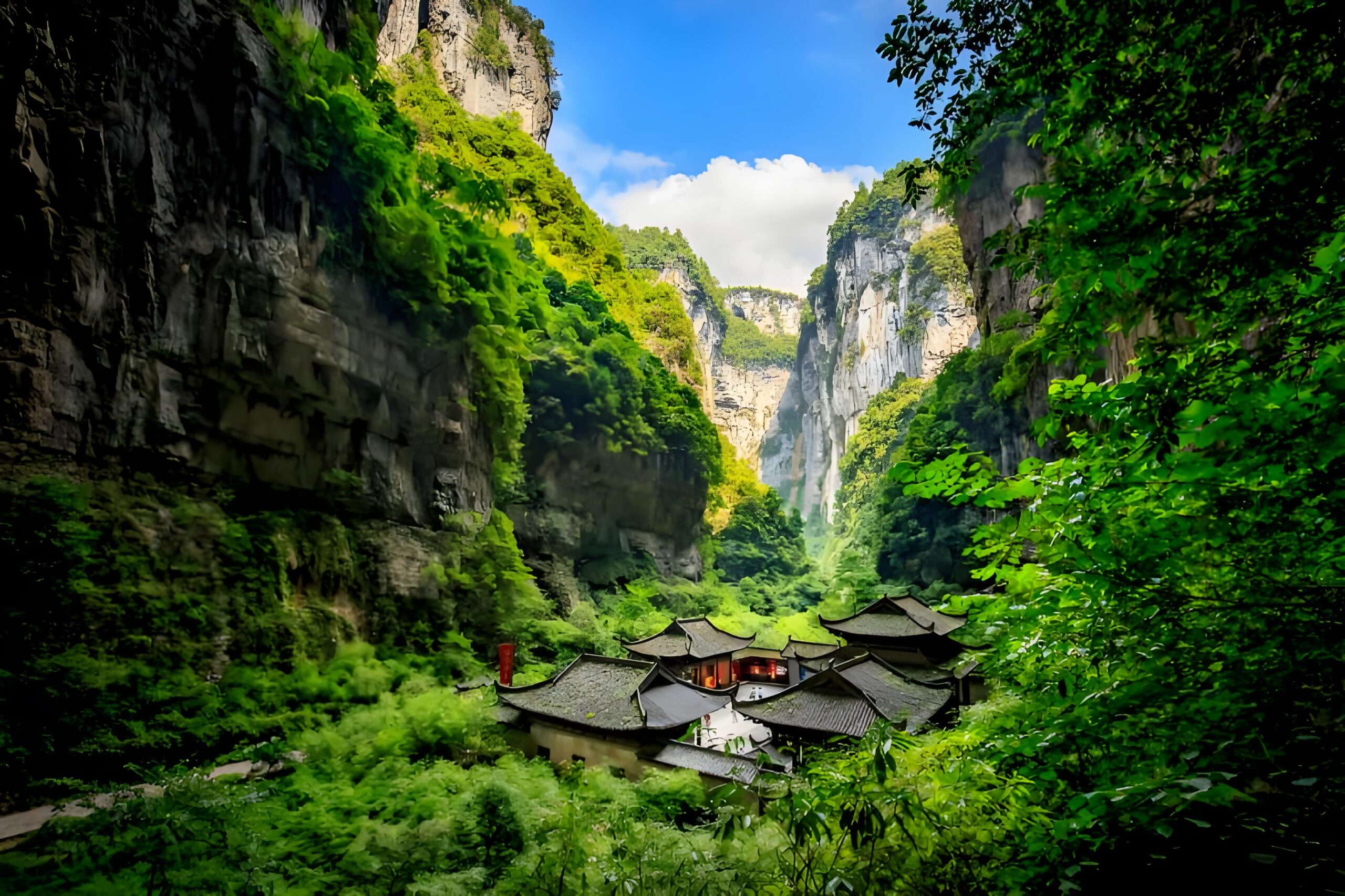Located at the junction of Baiguo Township and Hetao Township, 20 kilometers southeast of Wulong County, Chongqing, the Wulong Three Natural Bridges form the world’s largest cluster of natural bridges. Situated 15 kilometers from the “Southern Pastoral” Fairy Mountain, the area boasts convenient transportation. Carved by nature’s masterful hand, these three natural stone arch bridges exhibit grandeur, wonder, peril, elegance, seclusion, and uniqueness. Despite enduring millennia of weathering, they remain remarkably intact. The scenic area features lush forests, abundant vegetation, cascading springs, and waterfalls, encompassing a breathtaking landscape of mountains, rivers, springs, gorges, peaks, and cascades.
Shrouded in dense shrubs, the bridges bear witness to centuries of history. At dawn, when mist envelops the valley, the towering bridges resemble ethereal pathways to celestial realms, evoking awe and wonder—divine or miraculous?

Comprising Tianlong Bridge (Heavenly Dragon), Qinglong Bridge (Azure Dragon), and Heilong Bridge (Black Dragon), the Three Natural Bridges are renowned for their colossal scale and majestic presence, ranking as Asia’s largest natural bridge cluster. Averaging over 200 meters in height and 100 meters in width, the three bridges span the Yangshui River Canyon in parallel formation, connecting the cliffs on both banks. Such a concentration of massive natural stone arches within a few hundred meters is rare in China and globally, truly a precious gift from nature. Walking along the serene trails beneath the bridges, visitors gain a deeper appreciation of their magnificence and marvel at the Creator’s ingenuity. The bridges are dotted with karst caves and draped with cascading water curtains, while streams murmur and springs tinkle below.
The area is characterized by verdant forests, emerald peaks, sheer cliffs, swaying bamboo groves, and rushing streams, forming a pristine landscape of rugged mystery and tranquility. Its natural canvas—woven with mountains, waters, waterfalls, gorges, caves, and bridges—creates a perfect harmony. Highlights such as the Natural Bridges, Cliffside Trails, Sky-Piercing Pillar, and Old Man Welcoming Visitors captivate travelers, leaving them enchanted.
In 2013. Hollywood’s Transformers 4 filmed on location in Wulong. Director Michael Bay arrived on October 29. prompting the temporary closure of the Three Natural Bridges Scenic Area—a UNESCO World Heritage Site—from October 27 to November 2. This unprecedented move disrupted visits for tens of thousands of tourists, underscoring the site’s global allure.
Translation Notes:
Cultural and Geographic Terms:
“天生三桥” translated as “Three Natural Bridges” to emphasize their natural formation.
Names like “天龙桥” rendered as “Tianlong Bridge (Heavenly Dragon)” to preserve cultural context.
Descriptive Language:
Adjectives like “雄、奇、险、秀、幽、绝” adapted to “grandeur, wonder, peril, elegance, seclusion, and uniqueness” for poetic yet accurate expression.
Metaphors such as “御桥” translated as “ethereal pathways to celestial realms” to maintain imagery.
Technical Details:
Measurements (e.g., 200 meters) retained in metric units for international clarity.
Geological terms like “溶洞” translated as “karst caves” for precision.
Film Reference:
Highlighted the impact of Transformers 4 filming to emphasize the site’s global recognition.

This translation balances factual accuracy with evocative language to mirror the original’s awe-inspiring tone.
